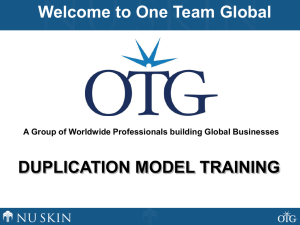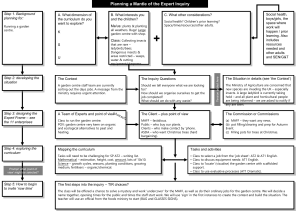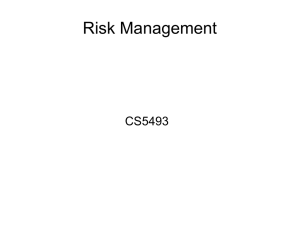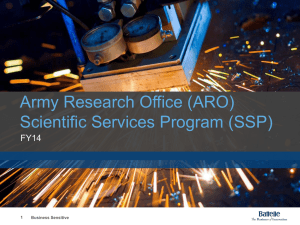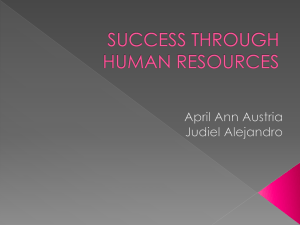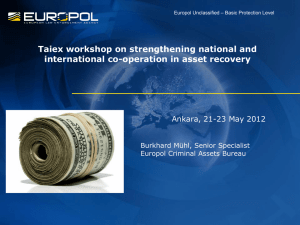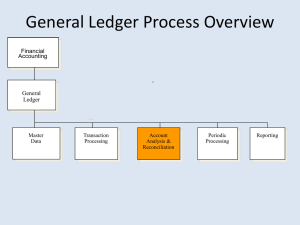FASB 143 – Asset Retirement Obligations
advertisement
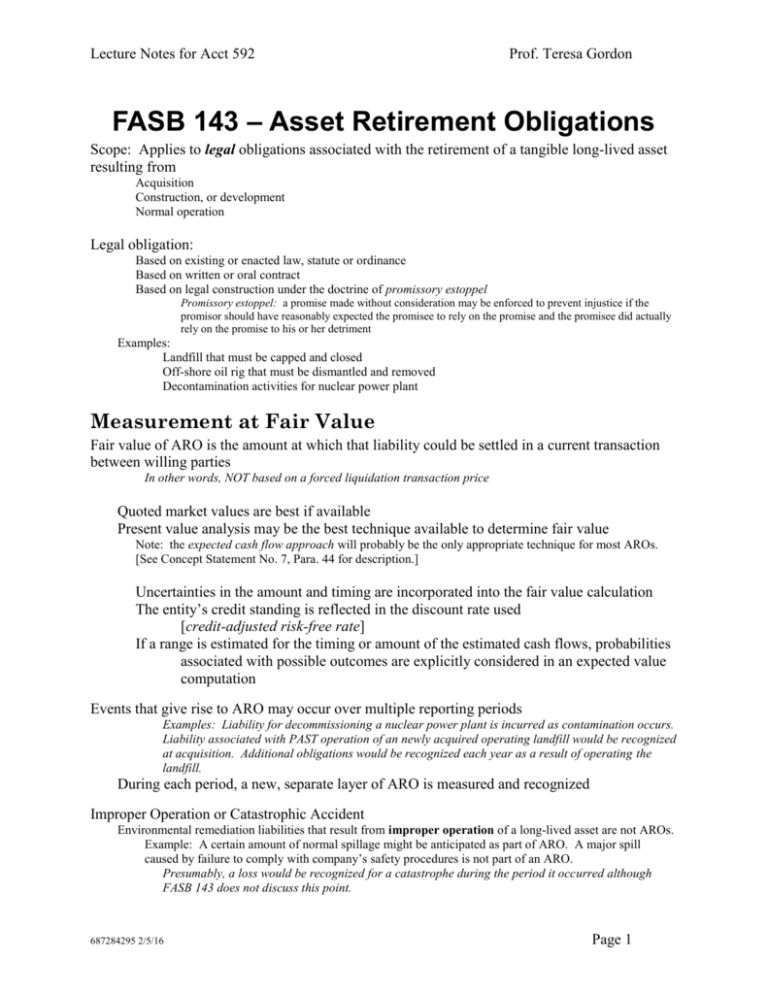
Lecture Notes for Acct 592
Prof. Teresa Gordon
FASB 143 – Asset Retirement Obligations
Scope: Applies to legal obligations associated with the retirement of a tangible long-lived asset
resulting from
Acquisition
Construction, or development
Normal operation
Legal obligation:
Based on existing or enacted law, statute or ordinance
Based on written or oral contract
Based on legal construction under the doctrine of promissory estoppel
Promissory estoppel: a promise made without consideration may be enforced to prevent injustice if the
promisor should have reasonably expected the promisee to rely on the promise and the promisee did actually
rely on the promise to his or her detriment
Examples:
Landfill that must be capped and closed
Off-shore oil rig that must be dismantled and removed
Decontamination activities for nuclear power plant
Measurement at Fair Value
Fair value of ARO is the amount at which that liability could be settled in a current transaction
between willing parties
In other words, NOT based on a forced liquidation transaction price
Quoted market values are best if available
Present value analysis may be the best technique available to determine fair value
Note: the expected cash flow approach will probably be the only appropriate technique for most AROs.
[See Concept Statement No. 7, Para. 44 for description.]
Uncertainties in the amount and timing are incorporated into the fair value calculation
The entity’s credit standing is reflected in the discount rate used
[credit-adjusted risk-free rate]
If a range is estimated for the timing or amount of the estimated cash flows, probabilities
associated with possible outcomes are explicitly considered in an expected value
computation
Events that give rise to ARO may occur over multiple reporting periods
Examples: Liability for decommissioning a nuclear power plant is incurred as contamination occurs.
Liability associated with PAST operation of an newly acquired operating landfill would be recognized
at acquisition. Additional obligations would be recognized each year as a result of operating the
landfill.
During each period, a new, separate layer of ARO is measured and recognized
Improper Operation or Catastrophic Accident
Environmental remediation liabilities that result from improper operation of a long-lived asset are not AROs.
Example: A certain amount of normal spillage might be anticipated as part of ARO. A major spill
caused by failure to comply with company’s safety procedures is not part of an ARO.
Presumably, a loss would be recognized for a catastrophe during the period it occurred although
FASB 143 does not discuss this point.
687284295 2/5/16
Page 1
Lecture Notes for Acct 592
Prof. Teresa Gordon
Initial Recognition
The period in which an asset retirement obligation (ARO) is recognized:
If a reasonable estimate can be made -- when it is incurred
If a reasonable estimate cannot be made initially – when it becomes possible to make a
reasonable estimate of the fair value of the liability
To offset the liability, the entity will increase {debit} the carrying amount of the related longlived asset by the same amount as the ARO liability recorded
Subsequent Recognition and Measurement
Period-to-period changes in ARO are recognized differently:
1. related to the passage of time
2. related to revisions in assumption about timing or amount of cash flows
First step:
Measure and incorporate changes in liability due to passage of time to arrive at a new
carrying value
Use an interest rate method applied to beginning balance using the original creditadjusted risk-free discount rate
The change is called an accretion expense and is classified as an operating expense on the
income statement.
Note that it is computed like interest expense and is based on the discount rate used when the ARO
was established
Second step:
Measure changes resulting from revisions to assumptions
Upward revisions: use current credit-adjusted risk-free discount rate
Downward revisions: use original credit-adjusted risk-free discount rate
Downward revisions may also use a weighted-average credit-adjusted risk-free
discount rate
Recognize as an increase in the carrying value of the related long-lived asset {the debit}
and an increase in the ARO {the credit}.
Note that this does not immediately affect the income statement. But the
amount of ARO asset depreciated in the current and future years will be
increased or decreased accordingly
Transition
Effective for fiscal years beginning AFTER June 15, 2002
Companies will have to retroactively recognize ARO assets and liabilities.
The effect on current year will be included in operating income
The effect on prior years will be presented net of tax as a cumulative effect of a change in
accounting principle
687284295 2/5/16
Page 2
Lecture Notes for Acct 592
Prof. Teresa Gordon
EXAMPLE 1 – Asset Retirement Obligation
A waste management company opens a landfill on January 1, 2003. It is legally required to
properly cap and close the landfill and restore the surface of the land for alternative use. The
estimated useful life of the landfill is 12 years. The land was purchased in 2001 for $600,000.
Upon closure, the land will be donated to the country for a park. The estimated value of the tax
deduction related to the gift is $200,000. The cost incurred during 2002 to ready the property for
use as a landfill was $800,000. The estimated capacity of the landfill is 120,000 tons of garbage.
Level of usage is expected to be constant over the life of the landfill.
The company uses the following assumptions to compute the fair value:
1. Labor costs based on current marketplace wages:
Estimated Cash
Probability
Expected Cash
Flows
Assessment
Flows
$300,000
25%
$375,000
50%
$450,000
25%
2.
3.
4.
5.
6.
7.
Expected overhead rate = 80% of direct labor costs
Expected cost of materials for closure = $85,000
Normal profit margin for contractors in this industry = 20%
Risk premium that a contractor would demand for bearing the uncertainty of a commitment
this far into the future = 7% of the estimated inflation-adjusted cash flows
The risk-free rate of interest on January 1, 2003 is 4%. The credit standing adjustment is 8%
for a total discount rate of 12%
Assumed inflation rate = 3%
Initial ARO Liability at January 1, 2003
Expected labor and material costs
Allocated overhead
$
$
460,000
300,000
760,000
152,000
912,000
1.425761
1,300,294
91,021
1,391,315
$
357,116
375,000 * 80%
Markup on direct costs
$760,000 * 20%
Expected cash outflow before inflation
Inflation factor
3% for 12 periods
Inflation adjusted cashflow
Market risk premium
1,300,294 * 7%
Expected future cash outflow at closure of landfill =
Present value
687284295 2/5/16
12% for 12 periods
Page 3
Lecture Notes for Acct 592
Prof. Teresa Gordon
Computing depreciation or depletion expense:
Historical cost of land
Preparation costs
Residual value
Asset retirement obligation capitalized
$
$
$
600,000
800,000
(200,000)
Depreciation base
Estimated capacity in tons of garbage
120,000
Depletion or depreciation rate per ton
$
Accretion expense is based on the ARO capitalized. Multiply the beginning of the year balance
in the ARO liability by the credit-adjusted risk-free rate (the same rate used to discount the future
cash flows).
The following schedule of expenses assumes that there is no need to revise any of the
assumptions that affect anticipated future cash flows.
Year
2003
2004
2005
2006
2007
2008
2009
2010
2011
2012
2013
2014
687284295 2/5/16
ARO - BOY
357,116
399,970
447,966
501,722
561,929
629,360
704,883
789,469
884,206
990,310
1,109,147
1,242,245
ARO - EOY
399,970
447,966
501,722
561,929
629,360
704,883
789,469
884,206
990,310
1,109,147
1,242,245
1,391,315
12% $
12.98
Accretion
Depreciation
Expense
Expense
42,854
129,760
47,996
129,760
53,756
129,760
60,207
129,760
67,431
129,760
75,523
129,760
84,586
129,760
94,736
129,760
106,105
129,760
118,837
129,760
133,098
129,760
149,069
129,760
1,034,199
1,557,116
Total Expense
172,614
177,756
183,516
189,966
197,191
205,283
214,346
224,496
235,864
248,597
262,857
278,829
2,591,315
Page 4
Lecture Notes for Acct 592
Prof. Teresa Gordon
Example 2 – Same facts as Example 1 EXCEPT:
New regulations are announced in early 2008. The projected costs are consequently expected to
increase by the following amounts. All other assumptions remain the same.
Labor increases by
Materials increase by
Credit-adjusted risk-free rate
15% $
50% $
10%
56,250
42,500
Since this is an UPWARD adjustment in the ARO, the increase is computed using the current
credit-adjusted risk-free rate.
Expected increase in labor and material costs
Allocated overhead on direct labor
* 80%
Markup on direct costs
* 20%
Expected cash outflow before inflation
Inflation factor
3% for 7 periods
Inflation adjusted cashflow
Market risk premium
Expected future cash outflow at closure of landfill =
Present value
10% for 7 periods
The accretion cost on this new ARO will use the discount rate from 2008 (not the original one
from 2003). Consequently, it is probably easier to compute the additional accretion expense in a
new set of columns.
For the depreciation expense, we first have to determine the carrying value of the landfill
BEFORE the change in the assumptions – at the end of 2007. Then we re-compute the
depreciation rate over the remaining useful life.
Historical cost
Initial ARO recognized
1,400,000
357,116
1,757,116
Less accumulated depreciation
Carrying value at end of 2007
Upward adjustment to ARO
Less salvage value
(200,000)
Depreciation base
Remaining capacity in tons of garbage
Revised rate per ton
687284295 2/5/16
Page 5
Lecture Notes for Acct 592
Prof. Teresa Gordon
Upward Revision of Cash Flows for Landfill Example
Initial ARO
ARO - BOY
ARO EOY
Upward Revision in ARO
12%
Accretion
Expense
ARO - BOY
ARO - EOY
10%
Accretion
Expense
Depreciation
Expense
Total
Expense
2003
357,116
399,970
42,854
129,760
172,614
2004
399,970
447,966
47,996
129,760
177,756
2005
447,966
501,722
53,756
129,760
183,516
2006
501,722
561,929
60,207
129,760
189,966
2007
561,929
629,360
67,431
129,760
197,191
2008
629,360
704,883
75,523
2009
704,883
789,469
84,586
2010
789,469
884,206
94,736
2011
884,206
990,310
106,105
2012
990,310
1,109,147
118,837
2013
1,109,147
1,242,245
133,098
2014
1,242,245
1,391,315
149,069
1,034,199
687284295 2/5/16
Page 6
Acct. 315 – Spring 2003
Solutions
Homework Exercises:
1.
Joseph Company acquired a tract of land containing an extractable natural resource. Joseph is
required by the purchase contract to restore the land to a condition suitable for recreational use
after it has extracted the natural resource. Geological surveys estimate that the recoverable
reserves will be 2,500,000 tons and that the land will have a value of $1,000,000 after
restoration. Relevant cost information follows:
Land ................................................. $9,000,000
Asset retirement obligation (asset).... 1,500,000
a.
b.
c.
What should be the depletion charge per ton of extracted material?
If the beginning balance in the asset retirement obligation (liability) account is $1,500,000 at
1/1/01 and the credit-adjusted risk-free discount rate used to determine the ARO was 8%, what
accretion expense be for 2001 and 2002?
What is the balance in the ARO liability account at 12/31/02?
687284295 2/5/16
Page 7
Acct. 315 – Spring 2003
Solutions
2.
A Fairfax Inc. is legally responsible for decontamination procedures associated with operating
a chemical plant it acquired on January 1, 2001 for $50,000,000. The acquisition cost was
attributed as follows: $48,000,000 for the plant and $2,000,000 for the land. The future cash
flows for decontamination were analyzed and discounted back to the present using a 5% creditadjusted risk-free rate. The asset retirement obligation was initially recognized at $2,000,000.
The expected useful life of the plant is 25 years. At the end of its useful life and after
decontamination, the plant should be worth $4,000,000 (not including the value of the land).
Fairfax uses the straight-line method to depreciate buildings and related manufacturing
facilities.
1.
What amount of depreciation expense should be recognized for 2001?
2.
What amount will be recognized as accretion expense for 2001?
3.
What amount will be recognized as accretion expense for 2002 assuming that no revisions in
assumptions regarding the asset retirement obligation are considered necessary?
4.
What is the ending balance in the asset retirement obligation on 12-31-02?
687284295 2/5/16
Page 8
Acct. 315 – Spring 2003
Solutions
Asset retirement obligation – Example 1 – year 2
Measurement of change in cashflows
Labor increases by
Materials increase by
Expected labor and material costs
Allocated overhead
$
56,250
Expected increase
Markup
Expected cash outflow before inflation
Inflation factor
Inflation adjusted cashflow
Market risk premium
Expected future cash outflow at closure of landfill =
Remaining useful life:
Present value
15% $
50% $
80%
20%
3%
7%
10%
56,250
42,500
98,750
45,000
143,750
28,750
172,500
1.229874
212,153
14,851
227,004
116,489
7periods
7 periods
Revised depreciation expense (current and prospective method)
Historical cost
1,400,000
Initial ARO recognized
357,116
1,757,116
Less accumulated depreciation
(648,798)
Carrying value at end of 2007
1,108,318
Upward adjustment to ARO
116,489
1,224,806
Less salvage value
(200,000)
Depreciation base
1,024,806
Remaining capacity in tons of garbage
Revised rate per ton
687284295 2/5/16
$
70,000
14.64
Page 9
Acct. 315 – Spring 2003
Revised Schedule of Expenses
and assuming that no adjustments of assumptions need to be made
12%
Initial ARO
Accretion
Year
ARO - BOY
ARO - EOY
Expense
2003
357,116
399,970
42,854
2004
399,970
447,966
47,996
2005
447,966
501,722
53,756
2006
501,722
561,929
60,207
2007
561,929
629,360
67,431
2008
629,360
704,883
75,523
2009
704,883
789,469
84,586
2010
789,469
884,206
94,736
2011
884,206
990,310
106,105
2012
990,310
1,109,147
118,837
2013
1,109,147
1,242,245
133,098
2014
1,242,245
1,391,315
149,069
1,034,199
Solutions
10% $
14.64
Upward Revision in ARO
Accretion
Depreciation
ARO - BOY
ARO - EOY
Expense
Expense
129,760
129,760
129,760
129,760
129,760
116,489
128,138
11,649
146,401
128,138
140,952
12,814
146,401
140,952
155,047
14,095
146,401
155,047
170,551
15,505
146,401
170,551
187,607
17,055
146,401
187,607
206,367
18,761
146,401
206,367
227,004
20,637
146,401
110,515
1,673,605
Total Expense
172,614
177,756
183,516
189,966
197,191
233,573
243,801
255,232
268,010
282,293
298,259
316,107
2,818,318
ok
Check:
Historical cost:
ARO initial
ARO adjustment
Salvage
$
$
687284295 2/5/16
Page 10
1,400,000
357,116
116,489
(200,000)
1,673,605
ok
Acct. 315 – Spring 2003
Solutions
Homework Exercise – Solution, Problem 1
1. Asset Retirement Obligation and Depletion – Joseph Co.
a.
What should be the depletion charge per ton of extracted material?
(9,000,000 cost + 1,500,000 ARO – 1,000,000 RV)/2,500,000 tons = 3.80
b.
If the beginning balance in the asset retirement obligation (liability) account is
$1,500,000 at 1/1/01 and the credit-adjusted risk-free discount rate used to determine
the ARO was 8%, what accretion expense be for 2001 and 2002?
For 2001: 1,500,000 * .08 = $120,000 accretion expense
For 2002: (1,500,000 + 120,000) * .08 = $129,600 accretion expense
c.
What is the balance in the ARO liability account at 12/31/02?
1,500,000 + 120,000 + 129,600 = $1,749,600
687284295 2/5/16
Page 11
